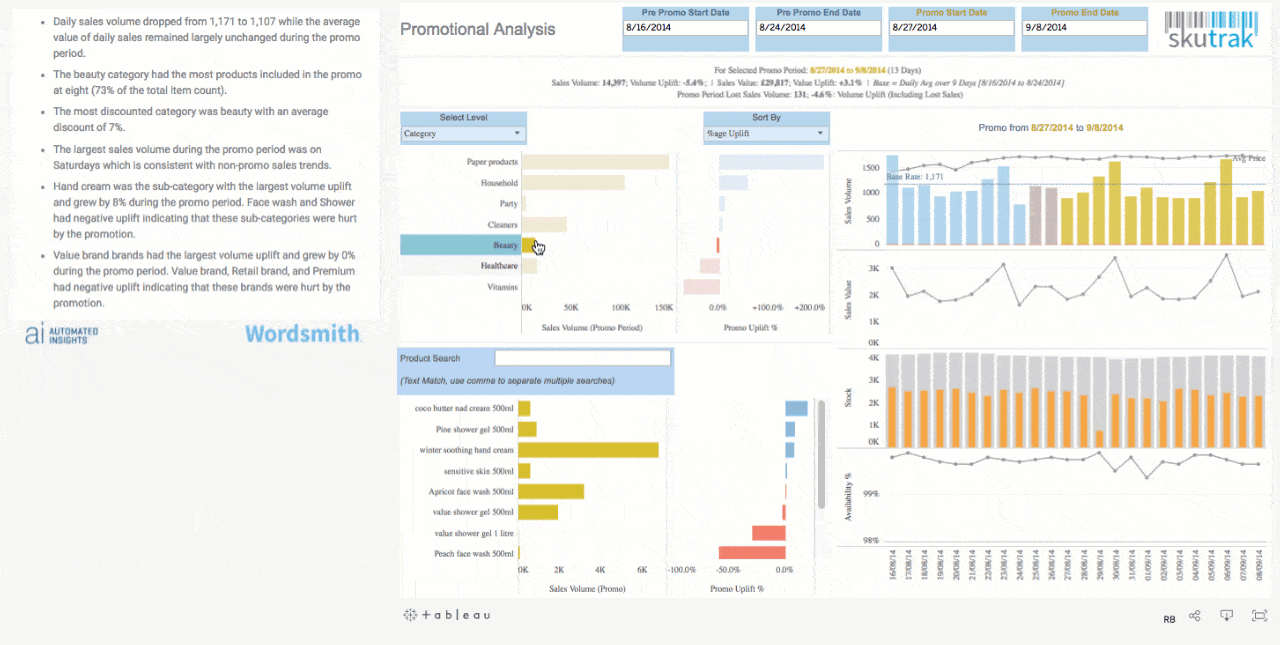2018 Retail trends in-focus—Natural Language Generation augments visual analytics improving data access for retailers
NLP, NLQ, and NLG are all important acronyms affecting our interactions with computers. You may not realize that you know these terms, but everyday, you're flooded with references to Alexa, Siri, and Google Assistant.
Our use of natural language to interact with computers is exploding. According to research by NPR and Edison Research, one in six Americans own a smart speaker, up 128 percent from last year. That’s roughly 39 million people engaging with technology using voice. This momentum is also reflected in the actions of retailers like Amazon and Apple who have strategically priced and released their smart speakers to trigger purchases and drive market share in the last three months.
Natural language acronyms stand for a branch within computer science. NLP, or Natural Language Processing, got its start in the 1950s, but the science behind it didn’t take off until the 1980s. NLP is a broader field covering sentence parsing, categorization, recognition, sentiment and generation. Think of NLG, or Natural Language Generation, as converting data and information into narrative descriptions. Lastly, NLQ, or Natural Language Querying, uses speech to question information stored in databases. An example is asking a computer “How many Cadburry Crème Eggs did Mondelēz International sell in the U.S. during Easter season?” The parsing understands the product, the manufacturer, the sales metric needed, and the timeframe to query for answers. This happens without the end user writing one line of code. (See more on NLQ here. And we will dive further into this topic soon.)
NLG is important when you realize that analytical narratives are created daily in organizations around the world. At the National Retail Federation (NRF) show last month, one vice president from a fashion retailer explained how she had two analysts write weekly narratives for their CEO to discuss last week’s store and online performance. She recognized that the narratives were an effective way to communicate information residing in the data that leadership wouldn’t have time to drill into.
When people combine interactive visual analysis with a narrative, they can consume, understand, think, and act much quicker vs. analyzing raw data in a spreadsheet or a static report. Factor in stronger processing power, machine learning, and application programming interfaces (APIs), and computers have reduced time for creating narratives to seconds. Furthermore, NLG has become a valuable asset for organizations and is increasing data accessibility enterprise-wide.
For an example, see the image below, which uses Wordsmith software. Wordsmith is the NLG software created by Tableau partner, Automated Insights, which reads the raw data from Tableau visual analyses, in real-time, and processes results into written narrative. On the right is a visual, promotional analysis from Tableau partner, Atheon Analytics, based in the UK. You can quickly see the impact that pricing and promotions have on sales and inventory. The narrative on the left is generated “auto-magically” based on what the visual analysis displays. When the “Household” category is selected, the narrative changes in seconds. It’s amazing.
“Tableau continues to blaze the trail within retail by enabling real-time data visualizations of company and consumer data,” said Marc Zionts, CEO of Automated Insights. “By pairing visualizations with Wordsmith, retailers and consumer goods companies can empower every dashboard viewer, regardless of data expertise, with timely, insightful analysis in written form.”
When visual analytics is deployed at scale, the narrative becomes more powerful by providing context around the analysis; think zero training on what the visual means. This focuses training and change management areas to other aspects of analysis or business processes – a win-win for multiple business areas of retailers.
It’s exciting to see the supplementing of visual analytics with generated narratives becoming the new normal. Why? This new normal allows analysts to return to their original passion – doing analysis!
Additionally, their effectiveness is elevated. With the written narratives embedded in the visualization, and provided to people at scale, data interaction and consumption is simpler and faster for everyone, supporting better insight discovery and decision-making.
To read more of the compelling trends we’re seeing in the retail and consumer goods industry, view our 2018 Retail Analytics Trends report.










